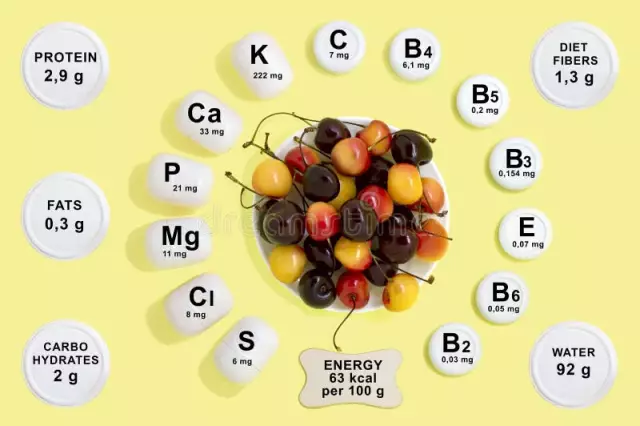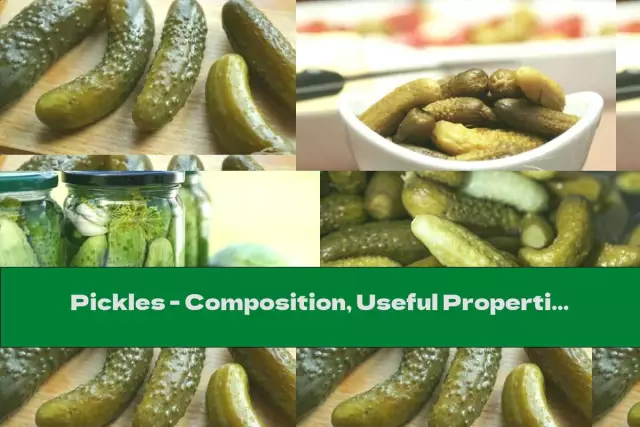- Author Rachel Wainwright [email protected].
- Public 2023-12-15 07:39.
- Last modified 2025-11-02 20:14.
Chestnut
There are two completely different types of chestnut: horse chestnut (also called stomach) and noble (also called "real"). It is the fruits of the latter that are considered edible. Among the French, such a product is revered as a real delicacy that has become a national one; they even arrange a holiday in his honor.
The ratio of BJU in the product

Source: depositphotos.com How to burn 154 kcal?
| Walking | 39 minutes |
| Jogging | 17 minutes |
| Swimming | 13 minutes |
| A bike | 22 minutes |
| Aerobics | 31 minutes |
| Household chores | 51 minutes |
Noble (real) chestnut belongs to the beech family, and is grown in Europe, North America and Asia. The most favorable climate for plants is warm subtropical. This type of tree differs from the stomach in the shape of its fruits and leaves. One round box of noble chestnut contains about 2-4 nuts. This type of plant is not grown in Russia, but it is not difficult to buy it in many stores.
But the world famous horse chestnut is a tree with a wide crown, which can reach 30 meters in height, it is distinguished by petiolate leaves, rounded in outline, more like hands with a fairly large number of "fingers". The flowers in the tree are collected in thyrsus, which are erect pyramidal inflorescences, the length of which reaches 30 cm. The fruits of the plant look like small spherical capsules, covered with thorns, when they ripen, they open with three valves. Usually there is only one shiny, dark brown and large nut in the stomach.
Useful properties of chestnut
A distinctive feature of chestnut is the content in it of a fairly high fat content, which in terms of quantity differs slightly (downward) only from almonds, walnuts, peanuts and hazelnuts. Chestnuts contain about 60% starch, about 6% protein, 15% sugars and more than 2% fat. Chestnut also contains B, A and C vitamins, minerals and fiber.
Due to the properties of chestnuts, which are characterized by a high content of tannins, it is not recommended to eat raw nuts in food.
Absolutely all parts of the plant contain various useful substances, however, in different proportions. So, for example, chestnut fruits contain biologically active substances, pectin, flavonoids, starch, tannins and oils; in the branches and bark there are many glycosides, oils and tannins.
Alcohol tinctures of chestnut, decoctions and infusions are used to treat various diseases such as atherosclerosis, hypertension, vascular and heart disease. Also, chestnut tincture is useful for the prevention and treatment of embolism and thrombosis.
In folk medicine, the benefits of chestnut are used to treat liver diseases, articular rheumatism, treatment of varicose veins, thrombophlebitis, hemorrhoids, many gynecological diseases that are associated with stagnation in the small pelvis.
The inedible horse chestnut also has healing properties, in which absolutely everything is used: leaves, bark, green shell, and fruits. As for flowers, they also have useful properties only when they are 1-2 days of flowering.
Eating chestnuts
Most often, chestnuts are eaten in a baked state. This cooking option is considered the most popular in France, where the autumn streets are literally "drowned" in the aromas of baked chestnuts. Also, the nut can be used boiled or baked. Dried nuts can be used as an additive to wheat flour.

The calorie content of chestnuts is low compared to other nuts and amounts to only 170 kcal.
In folk medicine, chestnut seeds are used, the benefits of which are very high in the fight against all sorts of pains and inflammations. Stomach flowers are pretty good honey plants. In terms of nutritional value, seeds are similar to grain grains, so flour is made from them.
In addition, it is believed that healing energy is placed in the horse chestnut, thanks to which you can get rid of many ailments and diseases. The benefits of chestnut have been proven for mastitis, mastopathy, and even for milk stagnation, which can occur when breastfeeding a baby.
Chestnut tincture is used externally to treat sciatica, gout, rheumatism and sciatica. In this case, it is necessary to rub the tincture into the problem areas of the body, the course of treatment lasts approximately 6 to 8 weeks.
Positively rubbing with chestnut tincture also affects the muscle ligaments, it promotes the resorption of hematomas and tumors, while helping to improve blood supply in the places of dislocations and bruises. Traditional medicine in the properties of chestnut sees an effective remedy for the treatment of articular rheumatism, cardiovascular and hypertensive diseases.
Chestnut harm
In addition to benefits, chestnuts can bring harm to the human body, therefore, before using it, it is imperative to consult a doctor.
Since chestnut reduces blood coagulation, its independent use for medicinal purposes is not recommended at all. It is strictly forbidden to take drugs with the addition of this plant for hypotension, kidney and liver diseases, as well as during breastfeeding and pregnancy.
YouTube video related to the article:
Found a mistake in the text? Select it and press Ctrl + Enter.






